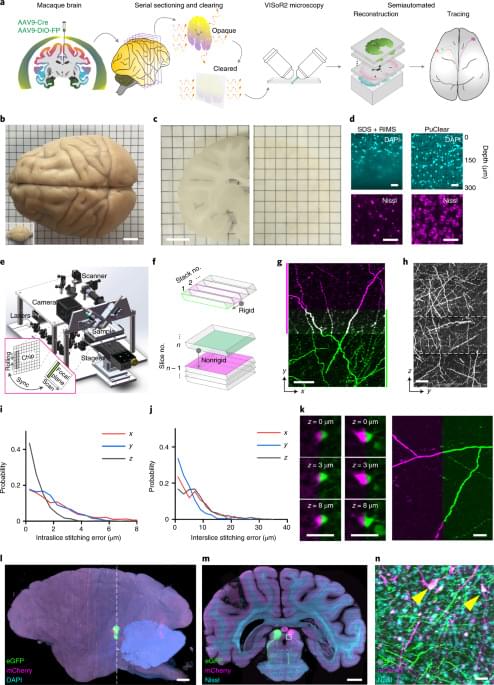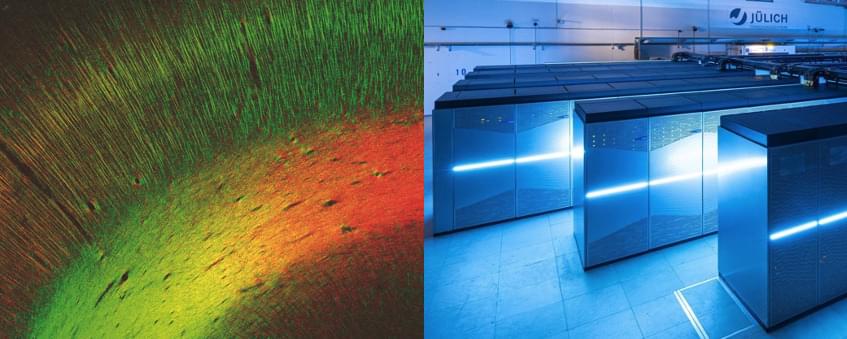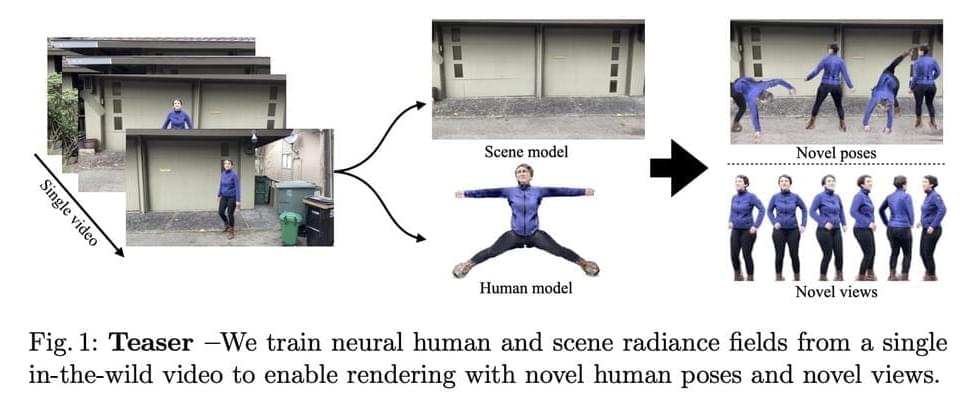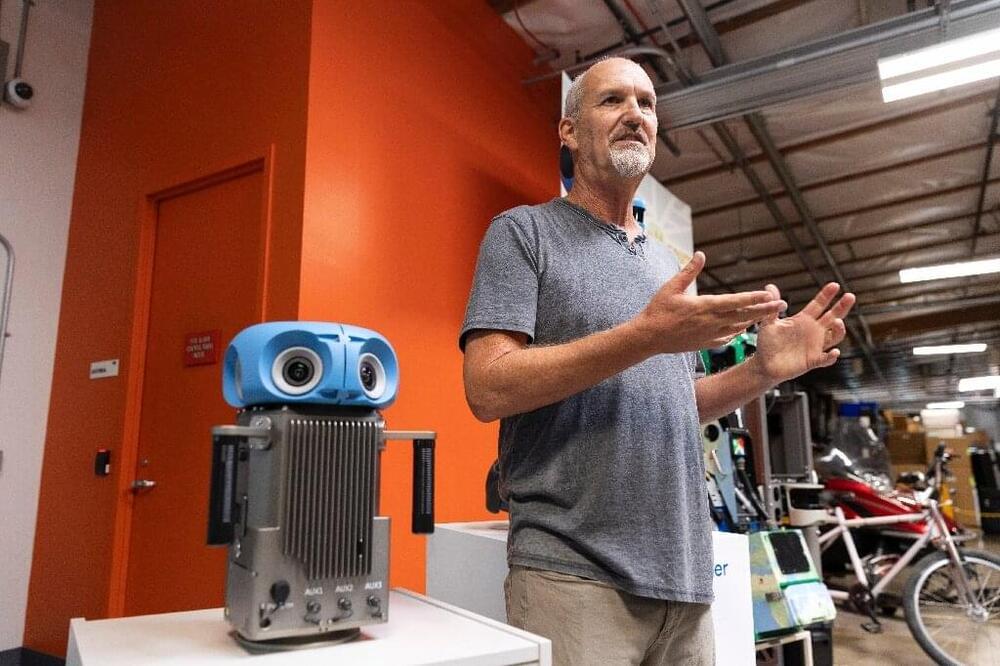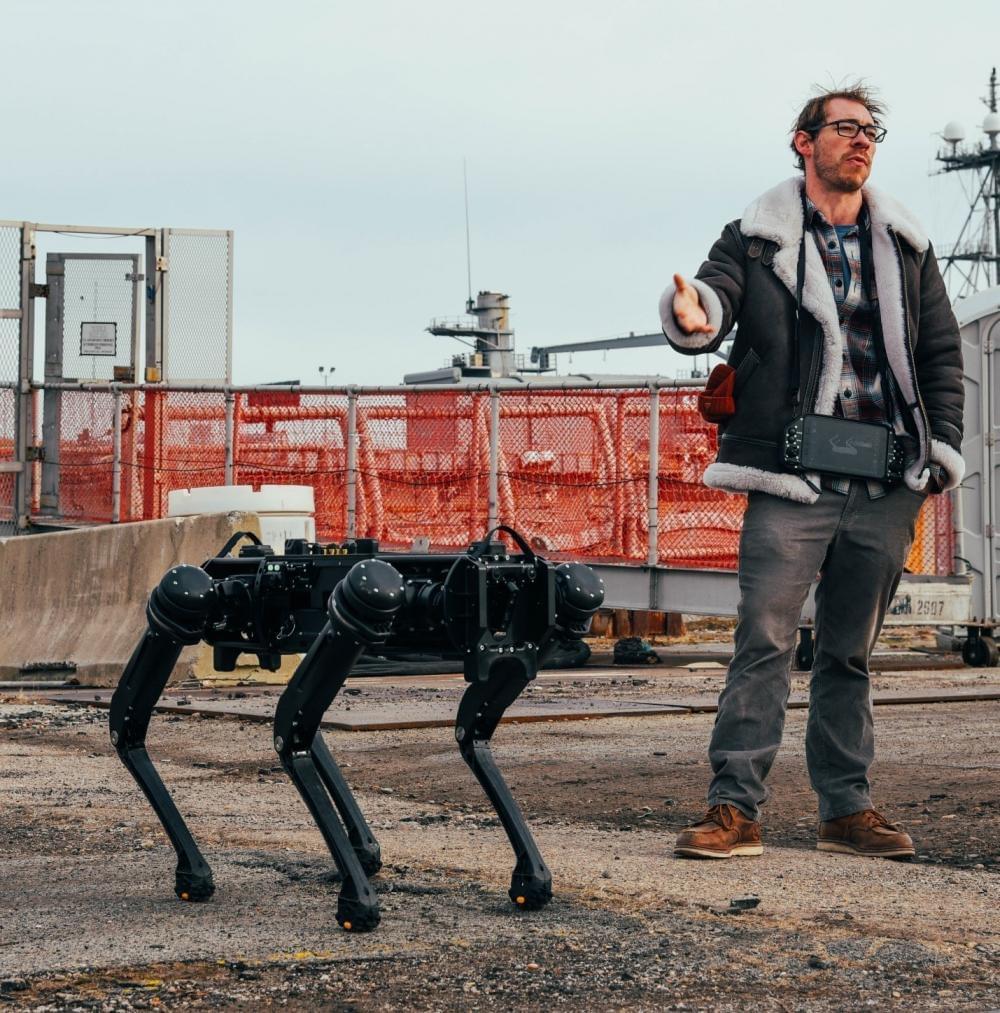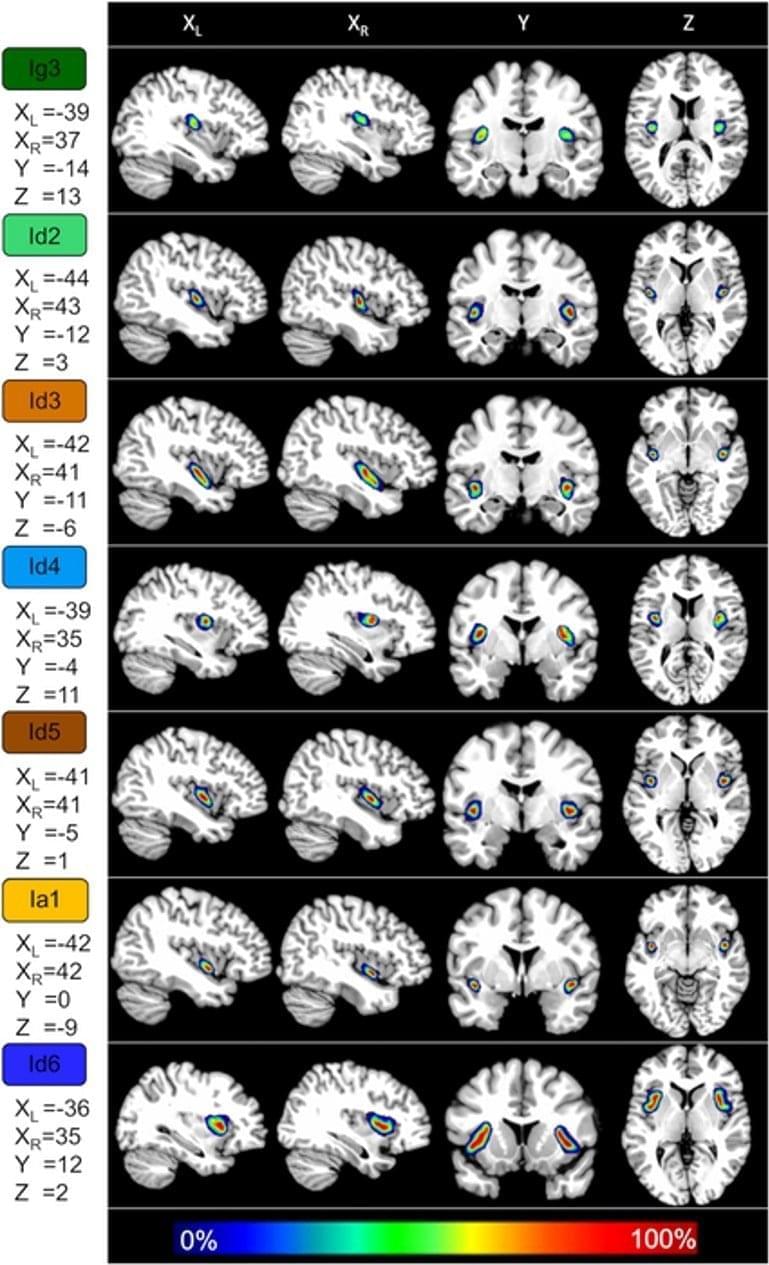Archive for the ‘mapping’ category: Page 29
Sep 28, 2022
BrainComp 2022: Experts in neuroscience and computing discuss the digital transformation of neuroscience and benefits of collaborating
Posted by Dan Kummer in categories: mapping, neuroscience, robotics/AI, supercomputing
A new field of science has been emerging at the intersection of neuroscience and high-performance computing — this is the takeaway from the 2022 BrainComp conference, which took place in Cetraro, Italy from the 19th to the 22nd of September. The meeting, which featured international experts in brain mapping, machine learning, simulation, research infrastructures, neuro-derived hardware, neuroethics and more, strengthened the current collaborations in this emerging field and forged new ones.
Now in its 5th edition, BrainComp first started in 2013 and is jointly organised by the Human Brain Project and the EBRAINS digital research infrastructure, University of Calabria in Italy, the Heinrich Heine University of Düsseldorf and the Forschungszentrum Jülich in Germany. It is attended by researchers from inside and outside the Human Brain Project. This year was dedicated to the computational challenges of brain connectivity. The brain is the most complex system in the observable universe due to the tight connections between areas down to the wiring of the individual neurons: decoding this complexity through neuroscientific and computing advances benefits both fields.
Hosted by the organising committee of Katrin Amunts, Scientific Research Director of the HBP, Thomas Lippert, Leader of EBRAINS Computing Services from the Juelich Supercomputing Centre and Lucio Grandinetti from the University of Calabria, the sessions included a variety of topics over four days.
Sep 24, 2022
Musing on Understanding & AI — Hugo de Garis, Adam Ford, Michel de Haan
Posted by Dan Breeden in categories: education, existential risks, information science, mapping, mathematics, physics, robotics/AI
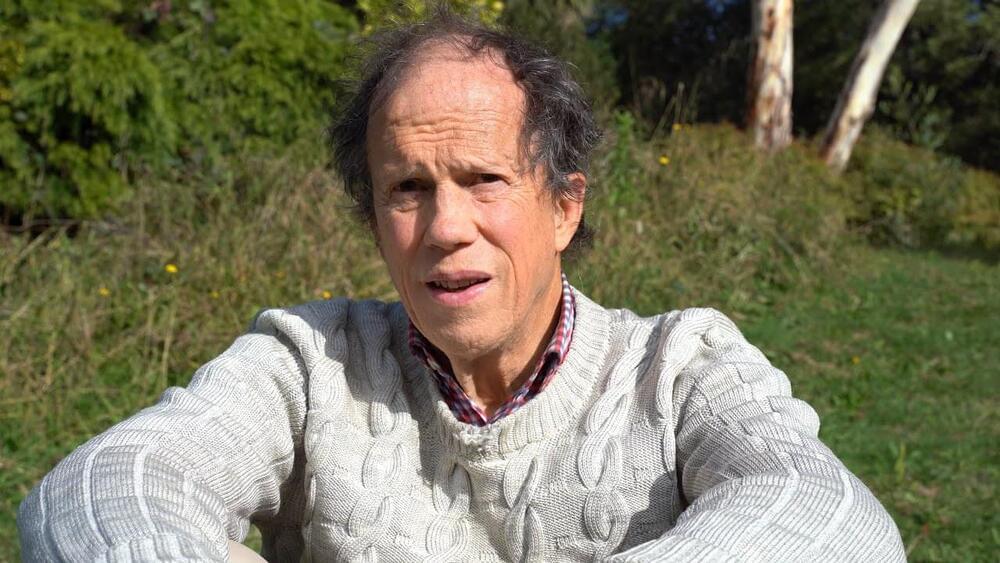
Started out as an interview ended up being a discussion between Hugo de Garis and (off camera) Adam Ford + Michel de Haan.
00:11 The concept of understanding under-recognised as an important aspect of developing AI
00:44 Re-framing perspectives on AI — the Chinese Room argument — and how can consciousness or understanding arise from billions of seemingly discreet neurons firing? (Should there be a binding problem of understanding similar to the binding problem of consciousness?)
04:23 Is there a difference between generality in intelligence and understanding? (and extentionally between AGI and artificial understanding?)
05:08 Ah Ha! moments — where the penny drops — what’s going on when this happens?
07:48 Is there an ideal form of understanding? Coherence & debugging — ah ha moments.
10:18 Webs of knowledge — contextual understanding.
12:16 Early childhood development — concept formation and navigation.
13:11 The intuitive ability for concept navigation isn’t complete.
Is the concept of understanding a catch all?
14:29 Is it possible to develop AGI that doesn’t understand? Is generality and understanding the same thing?
17:32 Why is understanding (the nature of) understanding important?
Is understanding reductive? Can it be broken down?
19:52 What would be the most basic primitive understanding be?
22:11 If (strong) AI is important, and understanding is required to build (strong) AI, what sorts of things should we be doing to make sense of understanding?
Approaches — engineering, and copy the brain.
24:34 Is common sense the same thing as understanding? How are they different?
26:24 What concepts do we take for granted around the world — which when strong AI comes about will dissolve into illusions, and then tell us how they actually work under the hood?
27:40 Compression and understanding.
29:51 Knowledge, Gettier problems and justified true belief. Is knowledge different from understanding and if so how?
31:07 A hierarchy of intel — data, information, knowledge, understanding, wisdom.
33:37 What is wisdom? Experience can help situate knowledge in a web of understanding — is this wisdom? Is the ostensible appearance of wisdom necessarily wisdom? Think pulp remashings of existing wisdom in the form of trashy self-help literature.
35:38 Is understanding mapping knowledge into a useful framework? Or is it making accurate / novel predictions?
36:00 Is understanding like high resolution carbon copy like models that accurately reflect true nature or a mechanical process?
37:04 Does understanding come in gradients of topologies? Is there degrees or is it just on or off?
38:37 What comes first — understanding or generality?
40:47 Minsky’s ‘Society of Mind’
42:46 Is vitalism alive in well in the AI field? Do people actually think there are ghosts in the machines?
48:15 Anthropomorphism in AI literature.
50:48 Deism — James Gates and error correction in super-symmetry.
52:16 Why are the laws of nature so mathematical? Why is there so much symmetry in physics? Is this confusing the map with the territory?
52:35 The Drake equation, and the concept of the Artilect — does this make Deism plausible? What about the Fermi Paradox?
55:06 Hyperintelligence is tiny — the transcention hypothesis — therefore civs go tiny — an explanation for the fermi paradox.
56:36 Why would *all* civs go tiny? Why not go tall, wide and tiny? What about selection pressures that seem to necessitate cosmic land grabs?
01:01:52 The Great Filter and the The Fermi Paradox.
01:02:14 Is it possible for an AGI to have a deep command of knowledge across a wide variety of topics/categories without understanding being an internal dynamic? Is the turing test good enough to test for understanding? What kinds of behavioral tests could reliably test for understanding? (Of course without the luxury of peering under the hood)
01:03:09 Does AlphaGo understand Go, or DeepBlue understand chess? Revisiting the Chinese Room argument.
01:04:23 More on behavioral tests for AI understanding.
01:06:00 Zombie machines — David Chalmers Zombie argument.
01:07:26 Complex enough algorithms — is there a critical point of complexity beyond which general intelligence likely emerges? Or understanding emerges?
01:08:11 Revisiting behavioral ‘turing’ tests for understanding.
01:13:05 Shape sorters and reverse shape sorters.
01:14:03 Would slightly changing the rules of Go confuse AlphaGo (after it had been trained)? Need for adaptivity — understanding concept boundaries, predicting where they occur, and the ability to mine outwards from these boundaries…
01:15:11 Neural nets and adaptivity.
01:16:41 AlphaGo documentary — worth a watch. Progresses in AI challenges human dignity which is a concern, but the DeepMind and the AlphaGo documentary seemed to be respectful. Can we manage a transition from human labor to full on automation while preserving human dignity?
Filmed in the dandenong ranges in victoria, australia.
Many thanks for watching!
Sep 16, 2022
Google AI succeeds in developing odor maps of molecules
Posted by Genevieve Klien in categories: mapping, robotics/AI
Sep 13, 2022
Deep Learning Technology Predicts Accidents on The Road
Posted by Shubham Ghosh Roy in categories: mapping, robotics/AI, satellites, sustainability
Studies say that by combining historical accident data with road maps, satellite imagery, and GPS, a machine learning model is trained to create high-resolution crash maps, we might be getting ever so closer to safer roads. Technology has changed a lot over the years such as GPS systems that eliminated the need to memorize streets orally, sensors and cameras that warn us of objects that are close to our vehicles, and autonomous electric vehicles. However, the precautions we take on the road have largely remained the same. In most places, we still rely on traffic signs, mutual trust, and the hope that we’ll reach our destination safely.
With a view to finding solutions to the uncertainty underlying road accidents, researchers at the MIT Computer Science and Artificial Intelligence Laboratory have been working with the Qatari Center for Artificial Intelligence to develop a deep learning model that can predict high-resolution maps of accident risks. The model calculates the number of accidents predicted for a specific future time frame using past accident data, road maps, simulations and GPS traces. Thus, high-risk zones and future crashes can be identified using the map.
According to reports by homelandsecuritynewswire.com, maps of this type have been captured so far at much lower resolutions, resulting in a loss of vital information. Former attempts have relied mostly on hystorical crash data, whereas the research team has compiled a wide base of critical information, identifying high-risk areas by analyzing GPS signals that provide data on traffic density, speed, and direction, along with satellite imagery that provides data on road structures. They observed that highways, for example, are more hazardous than nearby residential roads, and intersections and exits to highways are even more dangerous than other highways.
Sep 5, 2022
Apple Researchers Develop NeuMan: A Novel Computer Vision Framework that can Generate Neural Human Radiance Field from a Single Video
Posted by Kelvin Dafiaghor in categories: augmented reality, computing, mapping, neuroscience
Neural Radiance Fields (NeRF) were first developed, greatly enhancing the quality of new vision synthesis. It was first suggested as a way to rebuild a static picture using a series of posed photographs. However, it has been swiftly expanded to include dynamic and uncalibrated scenarios. With the assistance of sizable controlled datasets, recent work additionally concentrate on animating these human radiance field models, thereby broadening the application domain of radiance-field-based modeling to provide augmented reality experiences. In this study, They are focused on the case when just one video is given. They aim to rebuild the human and static scene models and enable unique posture rendering of the person without the need for pricey multi-camera setups or manual annotations.
Neural Actor can create inventive human poses, but it needs several films. Even with the most recent improvements in NeRF techniques, this is far from a simple task. The NeRF models must be trained using many cameras, constant lighting and exposure, transparent backgrounds, and precise human geometry. According to the table below, HyperNeRF cannot be controlled by human postures but instead creates a dynamic scene based on a single video. ST-NeRF uses many cameras to rebuild each person using a time-dependent NeRF model, although the editing is only done to change the bounding box. HumanNeRF creates a human model from a single video with masks that have been carefully annotated; however, it does not demonstrate generalization to novel postures.
With a model trained on a single video, Vid2Actor can produce new human poses, but it cannot model the surroundings. They solve these issues by proposing NeuMan, a system that can create unique human stances and novel viewpoints while reconstructing the person and the scene from a single in-the-wild video. Figure 1’s high-quality pose-driven rendering is made possible by NeuMan, a cutting-edge framework for training NeRF models for both the human and the scene. They first estimate the camera poses, the sparse scene model, the depth maps, the human stance, the human form, and the human masks from a moving camera’s video.
Sep 5, 2022
Anders Sandberg — Grand Futures — Thinking Truly Long Term
Posted by Dan Breeden in categories: computing, mapping, space
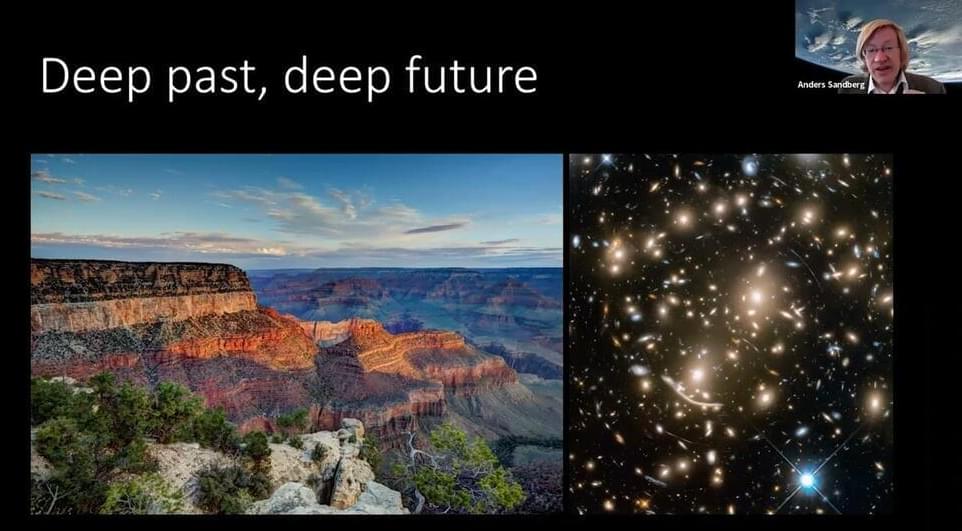
Synopsis: How can we think rigorously about the far future, and use this to guide near-term projects? In this talk I will outline my “grand futures” project of mapping the limits of what advanced civilizations can achieve – in terms of survival, expanding in space, computation, mastery over matter and energy, and so on – and how this may interact with different theories about what truly has value.
For some fun background reading, see ‘What is the upper limit of value?‘which Anders Sandberg co-authored with David Manheim.
Continue reading “Anders Sandberg — Grand Futures — Thinking Truly Long Term” »
Sep 2, 2022
Google’s immersive Street View could be glimpse of metaverse
Posted by Kelvin Dafiaghor in categories: internet, mapping
Fifteen years after its launch, a Google Maps feature that lets people explore faraway places as though standing right there is providing a glimpse of the metaverse being heralded as the future of the internet.
There was not yet talk of online life moving to virtual worlds when a “far-fetched” musing by Google co-founder Larry Page prompted Street View, which lets users of the company’s free navigation service see imagery of map locations from the perspective of being there.
Now the metaverse is a tech-world buzz, with companies including Facebook parent Meta investing in creating online realms where people represented by videogame-like characters work, play, shop and more.
Sep 1, 2022
Robot Dogs and Drones 3D Mapping ‘Ghost Ships’ with Laser-based Sensors
Posted by Dan Kummer in categories: drones, mapping, military, robotics/AI, virtual reality
Sounds like a sci-fi movie right? But it’s not. Naval Surface Warfare Center, Philadelphia Division is testing laser-based sensors on robot dogs or drones as a way to perform battle damage assessment, repair, installation, and modernization – all remotely.
NSWCPD’s Advanced Data Acquisition Prototyping Technology Virtual Environments (ADAPT.VE) engineers and scientists are testing new applications for light detection and ranging (LiDAR) to build 3D ship models aboard the ‘mothballed’ fleet of decommissioned ships at the Philadelphia Navy Yard.
Aug 29, 2022
Seven New Areas in the Insular Cortex Identified
Posted by Jose Ruben Rodriguez Fuentes in categories: mapping, neuroscience
Summary: Researchers at the Human Brain Project have identified and mapped 7 new areas of the insular cortex.
Source: Human Brain Project.
All newly detected areas are now available as 3D probability maps in the Julich Brain Atlas, and can be openly accessed via the HBP’s EBRAINS infrastructure.
